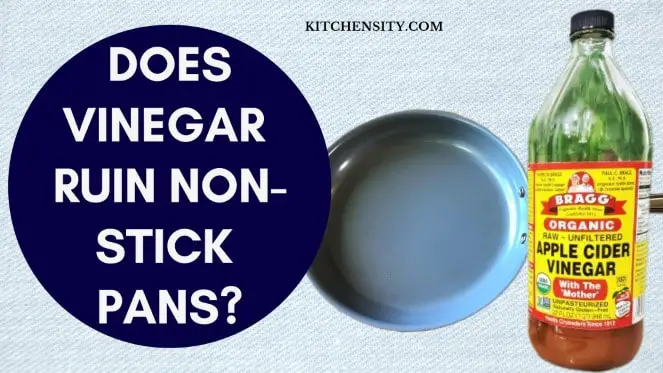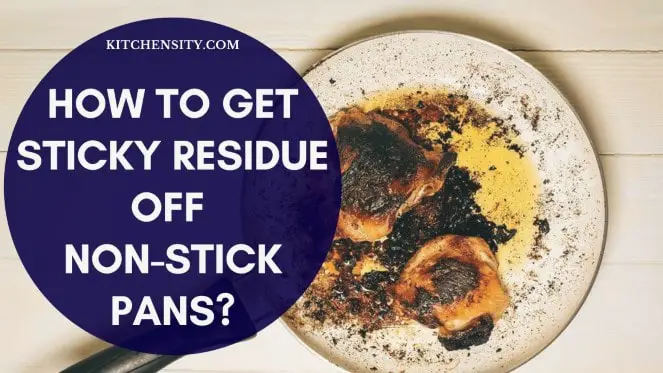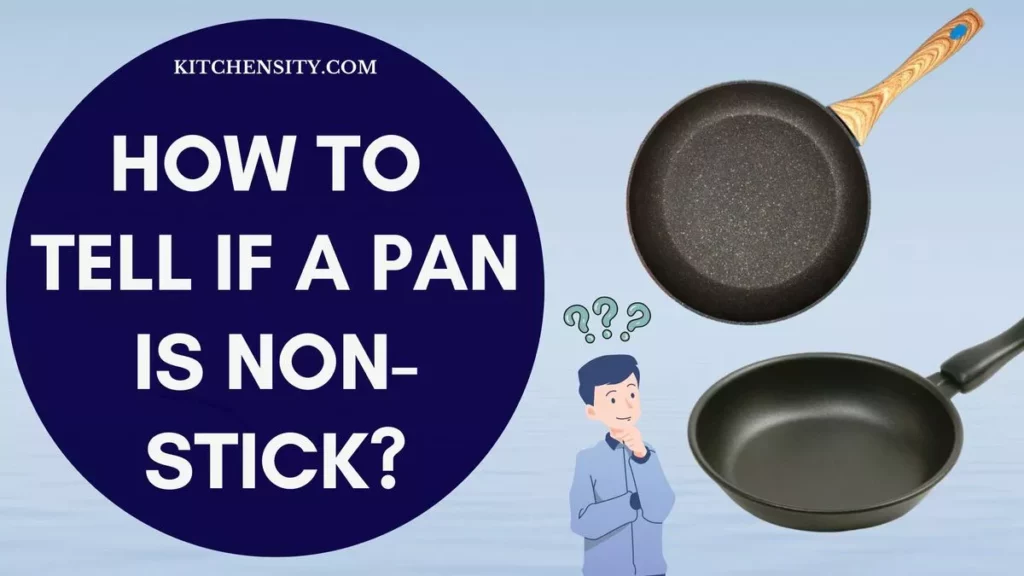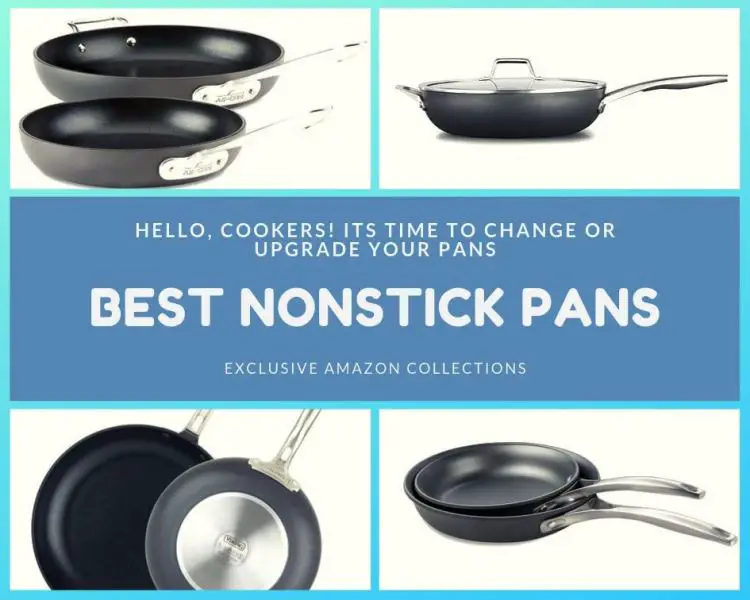Non-stick cookware has become a kitchen essential, offering convenience in cooking and cleaning. The prevalent use of these pans raises a crucial question: “Are Non-Stick Coatings Safe For Cooking?“
As their popularity soars, concerns about the potential health risks associated with these coatings have emerged. This article delves into these concerns, exploring general worries about health implications and specific risks related to deteriorating coatings.
By addressing these issues, you will gain insights into the safety considerations of non-stick cookware, empowering you to make informed choices for a healthy and enjoyable cooking experience.
Table of Contents
- 1 Are Non-Stick Coatings Safe For Cooking?
- 2 Is Non-Stick Cookware Harmful To Health?
- 3 Harmful Effects Of Non-Stick Cookware
- 4 Is Non-Stick Coating Coming Off Dangerous?
- 5 Are Non-Stick Pans Safe When Scratched?
- 6 Symptoms Of Teflon Poisoning In Humans
- 7 When To Throw Away Non-Stick Pans?
- 8 Alternatives To Non-Stick Cookware
- 9 Proper Care And Maintenance Of Non-Stick Pans
- 10 Regulatory Standards For Cookware Safety
- 11 Final Thoughts: Are Non-Stick Coatings Safe For Cooking?
- 12 Frequently Asked Questions (FAQs)
- 12.1 Can Non-Stick Cookware Cause Long-Term Health Issues?
- 12.2 How Can I Tell If My Non-Stick Pan Is No Longer Safe To Use?
- 12.3 Are There Any Non-Stick Coatings That Are Considered Safe?
- 12.4 Is It Safe To Use Scratched Non-Stick Pans Temporarily?
- 12.5 What Steps Can Be Taken To Minimize Health Risks When Using Non-Stick Cookware?
Are Non-Stick Coatings Safe For Cooking?
Yes, non-stick coatings are generally safe for cooking when used properly. Avoid overheating, and scratches, and replace pans if the coating is damaged for optimal safety. The safety of non-stick coatings for cooking depends on responsible use and maintenance.
Overheating or scratches can compromise the coating, potentially causing health concerns. Regular inspection, proper care, and adherence to safety guidelines contribute to a safe cooking experience with non-stick cookware.
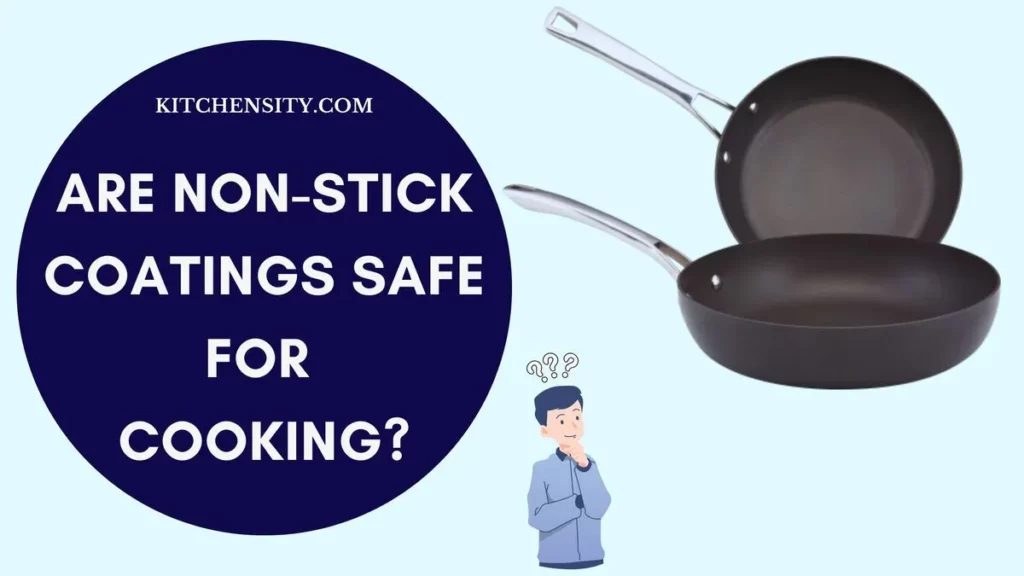
Also Read – Things To Look For When Buying Non-Stick Cookware
Is Non-Stick Cookware Harmful To Health?
Non-stick cookware, while beloved for its convenience, has sparked concerns about potential health risks. The primary culprit in this debate is perfluorooctanoic acid (PFOA), a chemical used in the production of traditional non-stick coatings like Teflon. When heated, these coatings can release PFOA fumes, which have been linked to adverse health effects.
PFOA exposure has been associated with various health concerns, including reproductive issues, liver damage, and developmental problems. While manufacturers have transitioned to PFOA-free formulations in response to these concerns, questions about the safety of alternative chemicals used in non-stick coatings linger.
Also, at high temperatures, non-stick coatings may break down, releasing compounds that could be harmful when ingested. While the health risks are generally considered low with proper use, it’s essential to understand potential dangers and adopt cautious cooking practices with non-stick cookware to minimize any associated health concerns.
Also Read – Types Of Non-Stick Coatings
Harmful Effects Of Non-Stick Cookware
The harmful effects of non-stick cookware are
- Release of Toxic Fumes: Traditional non-stick coatings, particularly those containing perfluorooctanoic acid (PFOA), can emit toxic fumes when exposed to high temperatures. PFOA fumes have been linked to respiratory issues and other health concerns.
- Potential Chemical Ingestion: Overheating non-stick pans may lead to the breakdown of the coating, releasing harmful chemicals. Ingesting these compounds, even in trace amounts, could pose health risks over time.
- Association with Health Conditions: PFOA, used in older non-stick formulations, has been associated with adverse health effects such as reproductive problems, liver damage, and developmental issues. While newer formulations are PFOA-free, concerns persist about the safety of alternative chemicals.
- Degradation Over Time: Non-stick coatings degrade with use and over time, especially when exposed to high temperatures or abrasive cleaning methods. This deterioration can compromise the effectiveness of the non-stick surface and raise concerns about chemical leaching.
- Limited Durability: Non-stick cookware typically has a finite lifespan. As the coating wears off, the pan’s non-stick properties diminish, prompting potential exposure to the underlying materials and compromising the overall safety and performance of the cookware.
Also Read – Can You Deep Fry In A Non-Stick Pan?
Is Non-Stick Coating Coming Off Dangerous?
Yes, the flaking or peeling of non-stick coating in cookware can pose potential dangers, both in terms of immediate safety concerns and long-term health risks.
Immediate Safety Concern
- Ingestion Of Non-Stick Particles: As the coating deteriorates, tiny particles may be released into the food. Ingesting these particles is a direct safety concern, as it introduces foreign materials into the body.
- Chemical Exposure During Cooking: Cooking with a pan where the non-stick coating is coming off can expose the food to the underlying materials. This is especially risky if the coating contains potentially harmful substances, as they may leach into the food.
Long-Term Health Risks
- Unknown Health Effects Of Ingested Materials: The long-term health effects of ingesting particles from deteriorating non-stick coatings are not fully understood. This uncertainty raises concerns about potential health risks that may manifest over time.
- Exposure To Underlying Materials: The base materials of the cookware, often metal, may be exposed as the non-stick coating wears off. Depending on the type of metal, prolonged exposure could have health implications, such as increased intake of iron or other elements.
Preventive Measures
- Regular Inspection: Periodically check non-stick cookware for signs of wear or damage. If the coating is peeling or flaking, consider replacing the cookware to avoid potential risks.
- Proper Use And Maintenance: Adhere to recommended cooking temperatures, avoid using metal utensils that can scratch the coating, and follow the manufacturer’s care instructions. Proper maintenance can extend the life of non-stick cookware and reduce the likelihood of coating degradation.
So, while immediate dangers involve the ingestion of non-stick particles and exposure to underlying materials, the long-term health risks are less clear.
Also Read – Best Non-Stick Cookware Brands
Are Non-Stick Pans Safe When Scratched?
The safety of non-stick pans when scratched depends on the extent of the damage and the specific materials used in the coating. While minor scratches may not immediately render them unsafe, deep or extensive scratches can compromise the non-stick properties and may pose health risks, particularly if the underlying materials are exposed.
Here’s an exploration of the key aspects:
- Compromised Non-Stick Properties: When non-stick pans are scratched, the integrity of the non-stick surface is compromised. This can result in food sticking to the pan and difficulties in cooking or cleaning.
- Potential Release Of Particles: Scratches may lead to the release of small particles from the non-stick coating into the food. While the health risks of ingesting these particles are debated, it’s generally advisable to minimize such exposure.
- Health Concerns With Certain Coating Materials: The safety of scratched non-stick pans depends on the specific materials used in the coating. Some coatings may contain compounds that, when released through scratches, could pose health risks upon ingestion.
- Best Practices For Scratched Pans: If a non-stick pan is scratched, it’s recommended to assess the extent of the damage. Deep or extensive scratches may warrant replacing the pan to ensure continued safe use.
- Using Utensils And Cleaning Methods: Avoid using metal utensils that can contribute to scratching, and opt for softer utensils like wooden or silicone. Additionally, choose non-abrasive cleaning tools to preserve the integrity of the non-stick coating.
- Manufacturer Guidelines: Refer to the manufacturer’s guidelines for the specific non-stick pan. Some pans may be designed to withstand minor scratches, while others may require more careful handling.
While minor scratches may not immediately render a non-stick pan unsafe, it’s essential to exercise caution and adopt preventive measures.
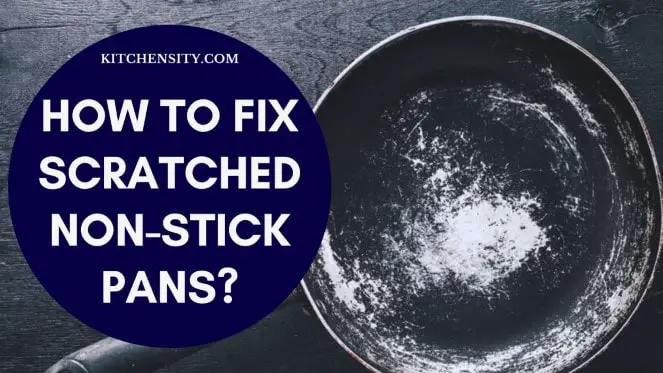
Also Read – How To Fix Scratched Non-Stick Pans?
Symptoms Of Teflon Poisoning In Humans
Teflon poisoning, also known as polymer fume fever or Teflon flu, can occur when individuals are exposed to the fumes released by overheated Teflon or other non-stick cookware coatings. The symptoms of Teflon poisoning are typically temporary and resemble flu-like symptoms. Here’s an overview:
- Flu-Like Symptoms: Individuals may experience symptoms similar to the flu, including fever, chills, headache, and muscle aches. These symptoms usually appear a few hours after exposure.
- Respiratory Distress: Teflon fumes can irritate the respiratory system, leading to coughing, chest discomfort, and shortness of breath. Individuals with pre-existing respiratory conditions may be more susceptible to these effects.
- Nausea And Vomiting: Exposure to Teflon fumes may cause nausea and vomiting. This can be a result of the body’s response to the inhalation of potentially harmful chemicals.
- Fatigue And Weakness: Teflon poisoning can contribute to feelings of fatigue and weakness. Individuals may experience a lack of energy and an overall sense of physical exhaustion.
- Eye And Throat Irritation: Irritation of the eyes and throat is common with Teflon exposure. Watery eyes, redness, and a scratchy or sore throat may be observed.
- Duration Of Symptoms: The symptoms of Teflon poisoning are generally short-lived and often resolve within a day or two once exposure to the fumes ceases. Seeking fresh air and ventilation is crucial in aiding recovery.
- Severe Cases: Severe cases of Teflon poisoning are rare but may occur with prolonged or intense exposure. In such instances, individuals may experience more severe respiratory distress and may require medical attention.
It’s important to note that the production of Teflon cookware has transitioned to PFOA-free formulations in response to health concerns.
While Teflon poisoning is associated with overheating Teflon, using cookware within recommended temperature ranges and ensuring proper ventilation can significantly reduce the risk of exposure to harmful fumes. If symptoms persist or are severe, seeking medical advice is advisable.
Also Read – Does Vinegar Ruin Non-Stick Pans?
When To Throw Away Non-Stick Pans?
Knowing when to throw away non-stick pans is essential for maintaining both cooking efficiency and safety. Consider the following factors to determine when it’s time to replace your non-stick cookware:
- Extensive Scratching: If the non-stick coating is extensively scratched, it may compromise the pan’s effectiveness. Deep scratches increase the risk of the coating breaking down, potentially releasing harmful substances into your food.
- Visible Wear And Peeling: Visible signs of wear, such as peeling or blistering of the non-stick coating, indicate that the pan has reached the end of its usable life. Continued use in this condition can result in uneven cooking and pose potential health risks.
- Pitting Or Deterioration: Pitting or deterioration of the non-stick surface is a clear indication that the pan’s integrity has been compromised. Pans with these issues are more likely to release particles into your food and should be replaced.
- Warped Or Damaged Structure: Warping, bending, or other structural damage to the pan can affect its performance and safety. A warped pan may not heat evenly, impacting your cooking results and making replacement necessary.
- Burnt Or Stuck-On Residue: If the pan consistently retains burnt or stuck-on residues despite thorough cleaning, it may be a sign that the non-stick properties have diminished. This can affect the quality of your cooking and signal the need for a new pan.
- Age Of The Cookware: Non-stick pans have a limited lifespan, and their performance tends to decline over time. If your pan is several years old and shows signs of wear, it’s prudent to consider replacing it for better cooking outcomes and safety.
- Health And Safety Concerns: If you have concerns about the safety of the non-stick coating, particularly if it contains materials like PFOA, consider replacing the pan with newer, PFOA-free alternatives for peace of mind.
Also Read – How To Get Sticky Residue Off Non-Stick Pans?
Alternatives To Non-Stick Cookware
Several alternatives to non-stick cookware offer diverse options for healthier and more versatile cooking. Consider the following alternatives:
- Stainless Steel: Durable and resistant to scratching, stainless steel cookware is a popular choice. While it may require more oil or seasoning to prevent sticking, it provides excellent heat distribution.
- Cast Iron: Known for its exceptional heat retention, cast iron cookware becomes naturally non-stick when properly seasoned. It adds iron to your diet and is suitable for a wide range of cooking methods.
- Ceramic Cookware: Ceramic-coated pans offer a non-stick surface without the use of PFOA or PTFE. They are versatile, easy to clean, and can withstand higher cooking temperatures.
- Carbon Steel: Similar to cast iron in terms of seasoning benefits, carbon steel pans are lightweight and heat up quickly. They develop a natural non-stick surface over time with proper care.
- Enamel-Coated Cast Iron: Combining the benefits of cast iron and enamel coating, these pans are resistant to acidic foods and do not require seasoning. They provide excellent heat distribution and retention.
- Glass Cookware: Glass baking dishes and casserole pans are non-reactive and do not release any potentially harmful chemicals. They are ideal for oven use and certain stovetop applications.
- Hard-Anodized Aluminum: Hard-anodized aluminum pans have a durable, scratch-resistant surface. While they may not be completely non-stick, they offer excellent heat distribution and are less prone to scratching.
- Bamboo Steamer Or Steamer Baskets: For specific cooking needs like steaming, bamboo steamers or steamer baskets provide a natural and non-stick option. They are suitable for vegetables, dumplings, and more.
- Clay Cookware: Clay pots and pans offer a unique cooking experience. They can be seasoned naturally over time and are great for slow-cooking and retaining flavors.
- Copper Cookware: Copper pans provide excellent heat conductivity and precise temperature control. While not inherently non-stick, they offer a smooth surface and are often lined with other materials for ease of use.
Choosing an alternative to non-stick cookware depends on personal preferences, cooking styles, and dietary considerations. Each option comes with its own set of advantages, so exploring and experimenting with different materials can enhance your cooking experience.
Also Read – How To Tell If A Pan Is Non-Stick?
Proper Care And Maintenance Of Non-Stick Pans
Proper care and maintenance of non-stick pans are crucial for extending their lifespan and ensuring optimal cooking performance. Follow these guidelines to keep your non-stick cookware in top condition:
- Seasonal Use: Avoid using non-stick pans on high heat continuously. Seasonal use helps prevent the breakdown of the non-stick coating and prolongs its effectiveness.
- Preheat Carefully: Preheat non-stick pans on low to medium heat. Rapidly heating them on high heat can damage the coating and diminish its non-stick properties.
- Use Soft Utensils: Opt for wooden, silicone, or other soft utensils to avoid scratching the non-stick surface. Metal utensils can damage the coating and reduce its effectiveness.
- Hand Washing Recommended: While some non-stick pans claim to be dishwasher-safe, hand washing is generally recommended. Use a soft sponge or cloth and mild dish soap to clean the pan gently.
- Avoid Abrasive Cleaners: Stay away from abrasive cleaners, scouring pads, or harsh cleaning chemicals. These can damage the non-stick coating and affect the pan’s performance.
- Store Carefully: To prevent scratches, stack non-stick pans with a protective layer such as a soft cloth or paper towel between them. Alternatively, hang them or store them individually.
- Avoid High Cooking Oils: Refrain from using cooking oils with a high smoke point, such as olive oil, at high temperatures. Opt for oils like canola or vegetable oil, which are more suitable for non-stick cooking.
- Cool Before Cleaning: Allow the pan to cool before cleaning it. Rapid temperature changes, such as placing a hot pan under cold water, can compromise the non-stick coating.
- Address Stains Promptly: If stains or residue build up, address them promptly. Soak the pan in warm, soapy water to loosen stubborn residues before gentle cleaning.
- Regularly Inspect The Coating: Periodically inspect the non-stick coating for signs of wear, peeling, or scratches. If you notice significant damage, consider replacing the pan to maintain safe and effective cooking.
Also Read – Can You Put Your Non-Stick Pans In The Dishwasher?
Regulatory Standards For Cookware Safety
Cookware safety is a crucial concern, and thankfully, there are numerous regulatory standards in place to ensure the materials and construction of cookware meet specific requirements for food contact. Here’s an overview of some key regulations:
European Union (EU)
- Framework Regulation (EC) No 1935/2004: This overarching regulation lays down the general safety requirements for all food contact materials (FCMs), including cookware. It prohibits the migration of substances from FCMs into food at levels that may harm human health or alter the composition of the food.
- Specific Measures Regulation (EC) No 2023/2006: This regulation sets out specific requirements for certain FCMs, including ceramics, metals, plastics, and coatings used in cookware. It specifies migration limits for various chemicals and materials, as well as testing methods to ensure compliance.
- Good Manufacturing Practice (GMP) Regulation (EC) No 2023/2011: This regulation establishes the GMP requirements for the manufacture of FCMs, including cookware. It covers aspects like production facilities, hygiene, traceability, and quality control systems.
United States (US)
Federal Food, Drug, and Cosmetic Act (FD&C Act): Section 402(a)(1) of the FD&C Act prohibits unsafe food additives, including those that may migrate from cookware into food. The US Food and Drug Administration (FDA) issues guidance documents and regulations specific to certain cookware materials, such as lead and cadmium limits in ceramic ware.
International
Codex Alimentarius: This is a collection of internationally recognized food standards, guidelines, and recommendations developed by the Joint FAO/WHO Codex Alimentarius Commission. The Codex includes standards for specific materials used in cookware, such as aluminum and stainless steel.
Additional Standards
- National Standards: Many countries have their national standards for cookware safety, which may be more stringent than the international or regional standards.
- Third-Party Certifications: Some independent organizations offer certification programs for cookware that meet specific safety and performance criteria.
Here are some general tips for choosing safe cookware:
- Look for cookware that is labeled as food-grade or certified by a reputable organization.
- Avoid cookware with chipped or cracked surfaces, as these can harbor bacteria.
- Use the correct type of cookware for the cooking method. For example, do not use aluminum cookware for acidic foods.
- Follow the manufacturer’s instructions for cleaning and care.
By following these tips and being aware of the regulatory standards in place, you can help ensure that your cookware is safe for use.
Also Read – Best Nonstick Pans for Gas Stoves
Final Thoughts: Are Non-Stick Coatings Safe For Cooking?
In conclusion, using non-stick cookware is generally safe if you follow some guidelines. Be cautious of scratches, avoid overheating, and replace pans if the coating is damaged. Newer non-stick pans with PFOA-free coatings are safer.
Choose alternatives like stainless steel or cast iron if you have concerns. Proper care, like handwashing and using soft utensils, helps maintain non-stick pans. Always check for regulatory standards, and make informed decisions based on your cooking preferences and health considerations.
Also Read – All-Clad 4110 NS R2 Non-Stick Fry Pan Review
Frequently Asked Questions (FAQs)
-
Can Non-Stick Cookware Cause Long-Term Health Issues?
Prolonged use of non-stick cookware, particularly with older coatings containing PFOA, may pose potential health risks. Opting for newer PFOA-free alternatives can minimize these concerns.
-
How Can I Tell If My Non-Stick Pan Is No Longer Safe To Use?
If you notice extensive scratches, peeling, or a degraded non-stick surface, it’s a sign your pan may no longer be safe. Consider replacing it to maintain cooking efficiency and safety.
-
Are There Any Non-Stick Coatings That Are Considered Safe?
Yes, newer non-stick coatings that are PFOA-free are generally considered safe. Look for cookware labeled as such to reduce potential health risks associated with older formulations.
-
Is It Safe To Use Scratched Non-Stick Pans Temporarily?
Using scratched non-stick pans temporarily may be safe if the damage is minimal. However, be cautious, as further use can compromise the coating and potentially introduce particles into your food.
-
What Steps Can Be Taken To Minimize Health Risks When Using Non-Stick Cookware?
To minimize health risks, avoid overheating, use soft utensils, and follow proper care and maintenance. Consider alternative cookware materials like stainless steel or ceramic for added safety and versatility.
Katrina Smith is a seasoned expert with over 25 years of experience in all things related to cooking and the kitchen. As an avid cook and kitchen enthusiast, she is passionate about sharing her knowledge and expertise on cookware, kitchen appliances, kitchen tips, and kitchen staples.
Through her articles and reviews, Katrina aims to inspire and help others improve their cooking skills, experiment with different ingredients, and invest in quality cookware and appliances.


